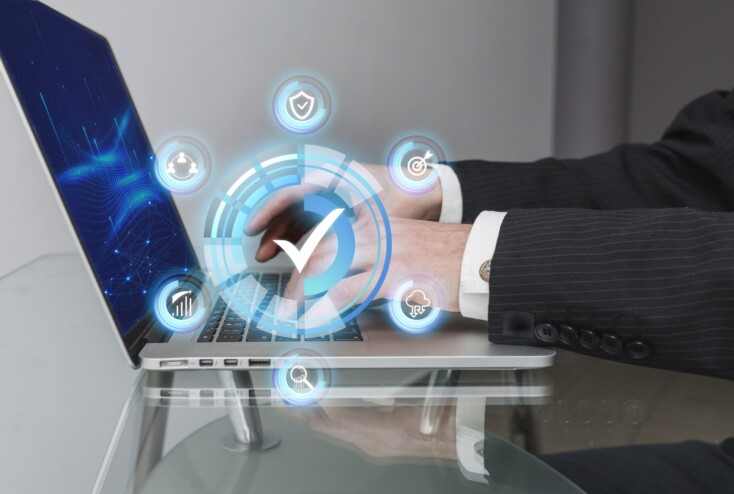
Upskilling: A Key Strategy to Futureproof SMEs in a Digital and Sustainable Economy
Upskilling is the key for SMEs to thrive in a digital and sustainable economy—and UOB FinLab is here to make it happen.

The daily protocols put in place to contain the spread of COVID-19 have now become part of our “new normal”. Businesses too have adapted, though many are still struggling. If there is one key lesson this year has taught us – it is that there is no such thing as being too prepared for what is to come.
This article will detail 8 key trends that have emerged from the COVID-19 storm and are now carrying us towards the “next normal”. Each is worth carefully studying as they can significantly shape the future business landscape – creating both risks and opportunities.
Work from home (WFH) rapidly shifted from being a privilege available to a small working population, to the default option for most. While there are notable drawbacks to remote working, it is not going away anytime soon. As McKinsey notes, employers must reconfigure their organisations to cater for a distributed workforce. This includes moving towards agile and decentralised structures which enable quicker decision-making – a key advantage in an uncertain environment.
It is not just the nature of work that is changing – employees themselves are as well. Research by Accenture espoused the notion of “liquid expectations” – where employees are increasingly judging employers from a more holistic perspective, with a focus on the “employee experience” just as much as the hard numbers. While it is true that current market conditions are slanted toward employers, the best talent will always have their pick of employers. Retaining them is key for a successful business.
While an unprofitable business cannot survive for long, COVID-19 has made consumers far more conscious about the kind of impact companies make, both positive and negative. Of course, in current times where many businesses are struggling just to remain afloat, it can be difficult to look beyond the balance sheet and towards “greater good” objectives.
But as Accenture noted, in the long term, consumers will gravitate towards companies that can balance profit with purpose. This trend might not be the highest priority now, but businesses would do well to take notice as the economy recovers.

With social distancing now firmly entrenched as part of the “new normal”, the “next normal” will see a continued expansion of what has been dubbed the “Contact Free” Economy. The most obvious application of this is in the growing e-commerce market and the decline of physical cash in lieu of cashless payment methods.
The lesson for businesses is that they must figure out ways to serve their customers in a contact-free manner as much as possible. E-commerce is obvious, but not all products and services can be delivered digitally. For those where face-to-face interaction is still required, businesses should give customers the option of contact-free payments. In the near future, this will likely become a necessity.
Of course, managing costs is important during these times. According to UOB and Accenture’s ASEAN SME Transformation Study¹, over 80 per cent of SMEs are looking to reduce their costs by improving business efficiency, mainly through the use of technology. Digitalisation is thus key to cost optimisation.
But cost cutting may not always be enough. For certain industries, the disruption caused by the pandemic has been so extensive that companies must shift their underlying business models if they want to survive.
The retail industry is a prominent example. KPMG, in its Global Retail Trends 2020 report, stated simply that “the days of being able to drive growth through physical stores are over” and that “conventional forms of cost cutting are no longer enough to shore up margins and rebuild the business”.
A more foundational shift is required. For the retail industry, this could mean having e-commerce channels and leveraging data and analytics to create a more personalised customer experience. For the food & beverage industry, it could be tapping into tools and resources that require less service staff.
(To aid businesses in reviewing their business models, identify gaps and opportunities, we have a Business Model Canvas Masterclass here)
McKinsey described the “next normal” consumer as someone who has seen changes in almost every aspect of their lives, from working and shopping to travelling and learning. While this seems obvious at first, the implications for businesses are wide-ranging – to meet the demands of this “next normal” consumer, they must shift their business models accordingly.
One important facet of this shift is digitalisation. Consumers are – by both necessity and choice – increasingly using digital channels for receiving information, purchasing products, and experiencing the customer journey. This includes both retail and B2B consumers.
However, while digitalisation is a common factor, McKinsey cautions that significant variations by both age, demographic, and geography. SMEs must be agile to pick up on the trends exhibited by their own customers and adapt. McKinsey also offers a couple helpful tips:
The second tip directly relates to the next trend, which is…

ASEAN McKinsey described the COVID-19 crisis as sparking a “great acceleration” – the intensification of existing trends. Prior to the pandemic, we were already seeing a gap between the top performing companies and the bottom. McKinsey believes that the speed at which this gap is expanding is only going to grow.
A key factor separating the two groups is digital-enabled business models which are resilient and future ready versus outdated legacy business models. Digitalisation was already important before the pandemic. But as Microsoft CEO Satya Nadella put it, “we’ve seen two years’ worth of digital transformation in two months”.
Many SMEs are already stepping up. The ASEAN SME Transformation Study revealed that 60 per cent of SMEs listed digitalisation as their top priority – compared to only 49 per cent before the pandemic. While near-term cost pressures likely mean that SMEs must prioritise where to focus their digitalisation efforts, McKinsey notes that “companies that move early in a crisis to get a jump on competitors often maintain that lead for years to come”. An important lesson for SMEs looking to make the most out of this crisis.
The scale of the pandemic means that governments have had to step up and take more direct control of the economy. Whether in Asia, Europe, or America, governments worldwide have enacted massive stimulus programmes, often involving direct cash infusions to affected businesses and citizens.
This is a trend that McKinsey believes will not abate anytime soon. ASEAN SMEs are supportive of this – but not in the way that most people would think. In fact, the ASEAN SME Transformation Study found that ASEAN SMEs wanted government support for digitalisation efforts, with 77 per cent of them wanting funding support for digital technology and for the creation of more robust digital infrastructure.
But as McKinsey notes, “at some point, governments may decide to get out of the business of business. How much, how fast, and in what ways governments reduce their economic role will be one of the most important questions of the next decade”. When this happens, it is critical that SMEs have already made significant progress on the digitalisation front.
Banks have already stepped up to help their SME clients through things like loan moratoriums and other credit relief measures. But the ASEAN SME Transformation Study showed that SMEs are viewing banks as an important business ecosystem partner, instead of mere financiers. In fact, 60 per cent of ASEAN SMEs want their banks to provide them digital solutions that can help support online sales and marketing as well as remote operations.
While this trend might have been accelerated by the pandemic, we think it is likely that it will become part of the “next normal”. With digitalisation quickly becoming a prerequisite to survive in today’s economy, banks can and should do much more to support their SME clients than just being financing providers.
On UOB’s part, one key initiative it has undertaken to support SMEs in their digitalisation efforts is The FinLab – with our PROPEL programme and tech solution partners.
At The FinLab, we understand that the digitalisation journey can seem intimidating at first. Questions like, “where should I start?” and “how do I know I’m on the right track?” are perfectly normal. That is also why we created the PROPEL programme – to give you a step-by-step yet personalised blueprint to support your digitalisation journey.
The programme will start by helping you identify and prioritise your digitalisation needs using our Digital Needs Assessment Test. Then, we will connect you to the right tech solutions with our Digital Solutions Advisory Quiz. And at each step along the way, you will be guided by The FinLab Team through easy-to-follow tech clinics.


Upskilling is the key for SMEs to thrive in a digital and sustainable economy—and UOB FinLab is here to make it happen.

UOB FinLab Indonesia held a series of its UKM SUKSES programmes, benefitting various Indonesian founders. The programme covered various topics such as smart tax strategies, health talks, business solutions, and financial foundations for startups alongside speakers who are experts in their field.

Continuing from last year, #UOBxWomenpreneurs series returns in 2025, organised by Business Banking Singapore (BBS), UOB FinLab, and Group Wholesale and Markets Marketing (GWMM) to engage and empower women entrepreneurs in Singapore. The initiative creates a strong platform for women-led businesses to access practical resources, mentorship, and a supportive network as they grow and lead with confidence.

Designed for business owners to enhance their digital capabilities through practical learning, this programme takes businesses to the next level.
Designed for business owners to enhance their digital capabilities through practical learning, this programme takes businesses to the next level.


Bridge ideas and innovation, subscribe to the FinLab Connect now!